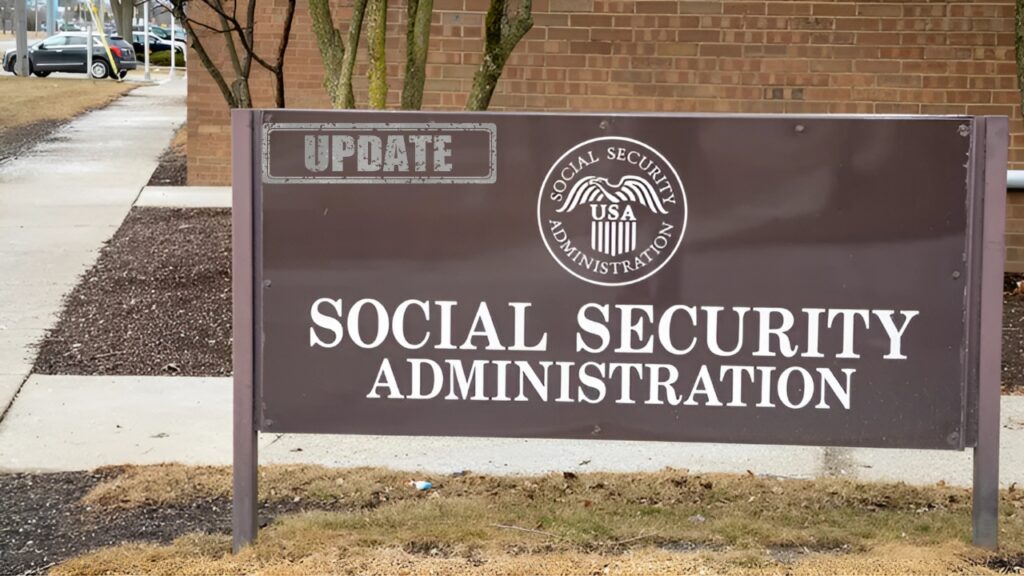
New Social Security rules require millions more in-person visits for identity verification, direct deposit changes, and routine services starting 2025.
The Social Security Administration (SSA) is implementing sweeping policy changes that will dramatically impact how Americans access their benefits. These new rules will force an estimated 5.3 million additional people to visit field offices annually – a 17% increase over previous years.
What’s Changing and Why It Matters
Starting in 2025, several major policy shifts are taking effect that will fundamentally alter how you interact with Social Security. The changes stem from anti-fraud initiatives and operational restructuring, but they’re creating significant challenges for beneficiaries who have relied on phone and online services for decades.
New Identity Verification Requirements
The most significant change requires people filing benefit applications who cannot prove their identities online to visit a field office in person. This anti-fraud measure takes effect March 31, 2025, and will increase field office visitors by 75,000 to 85,000 people per week.
Phone Service Restrictions
Social Security beneficiaries will no longer be able to handle routine tasks solely by phone, including:
- Changing addresses
- Checking claim status
- Requesting benefit verification letters
- Obtaining tax forms
- Updating direct deposit information
Instead, beneficiaries must complete a multi-factor online verification process to generate a one-time PIN code, or visit a field office in person.
The Numbers Behind the Impact
| Policy Change | Annual Impact |
|---|---|
| Identity verification requirements | 4+ million additional office visits |
| Direct deposit restrictions | 1.9 million extra trips annually |
| Phone service limitations | 3.4 million affected beneficiaries |
| Total additional visits | 5.3 million per year |
Who Will Be Most Affected
Seniors and Rural Communities
The changes disproportionately impact older Americans and those in rural areas. 6 million seniors live more than 45 miles from their nearest Social Security office. For many rural residents, visiting an office means taking a full day off work and driving for hours.
People with Disabilities
Individuals with mobility challenges or transportation difficulties will face the greatest burden. Many rely on phone services specifically because in-person visits are challenging or impossible.
Technology-Limited Population
The new PIN code system requires internet access and technological skills that many beneficiaries lack. Social Security estimates that 50% of people who traditionally used phone services won’t successfully meet the new online requirements.
Real-World Consequences
Longer Wait Times
Field offices that served 32 million visitors last year are already struggling with staffing shortages. The SSA has reportedly cut 7,000 staff positions, with some offices losing up to 25% of their workforce.
Processing Delays
The increased demand for in-person services will create bottlenecks in benefit processing. Last year, 30,000 people died while waiting for their benefits to be approved.
Regional Office Impacts
The administration is also considering closing regional offices that support the 1,200 field offices nationwide, potentially creating additional service disruptions.
What You Can Do Now
Create Your Online Account
If you haven’t already, set up your “my Social Security” account at ssa.gov. This will allow you to handle many tasks online without visiting an office or dealing with the new PIN requirements.
Update Your Information
Ensure Social Security has your current contact information, including your address, phone number, and banking details. This reduces the likelihood you’ll need to make changes later.
Plan Ahead
If you anticipate needing Social Security services, start the process early. With longer wait times expected, what used to take a phone call may now require scheduling an appointment weeks in advance.
The Bigger Picture
These changes represent a fundamental shift in how Social Security operates. While intended to reduce fraud and improve efficiency, critics argue they create unnecessary barriers for the 73 million Americans who depend on these services.
The timing is particularly challenging given that Social Security offices are operating at 40-year staffing lows while being asked to serve more people in person. The Department of Government Efficiency is reportedly seeking even deeper staff cuts, potentially worsening service delays.
Advocacy groups are pushing back against these changes, with dozens of Democratic Congress members sending letters asking the SSA to reconsider. Former commissioners from both parties have expressed concerns about the rushed implementation timeline and lack of stakeholder consultation.
The Social Security Administration maintains that these changes are necessary to combat fraud and protect beneficiaries’ information. However, the practical impact on millions of Americans – particularly vulnerable populations – remains a significant concern.
For now, the best strategy is preparation. Understanding these changes and planning accordingly can help you navigate the new system more effectively and avoid unnecessary trips to increasingly crowded field offices.
Frequently Asked Questions
Q: When do the new rules take effect?
A: Identity verification requirements start March 31, 2025, and direct deposit restrictions begin March 29, 2025.
Q: Can I still use phone services for any tasks?
A: Yes, but you’ll need to complete online verification to get a PIN code first, or visit an office in person.
Q: What if I can’t use the online system?
A: You’ll need to visit your local Social Security field office to complete transactions that previously could be done by phone.
New Rules Make It Tougher for Seniors to Handle Social Security Tasks by Phone